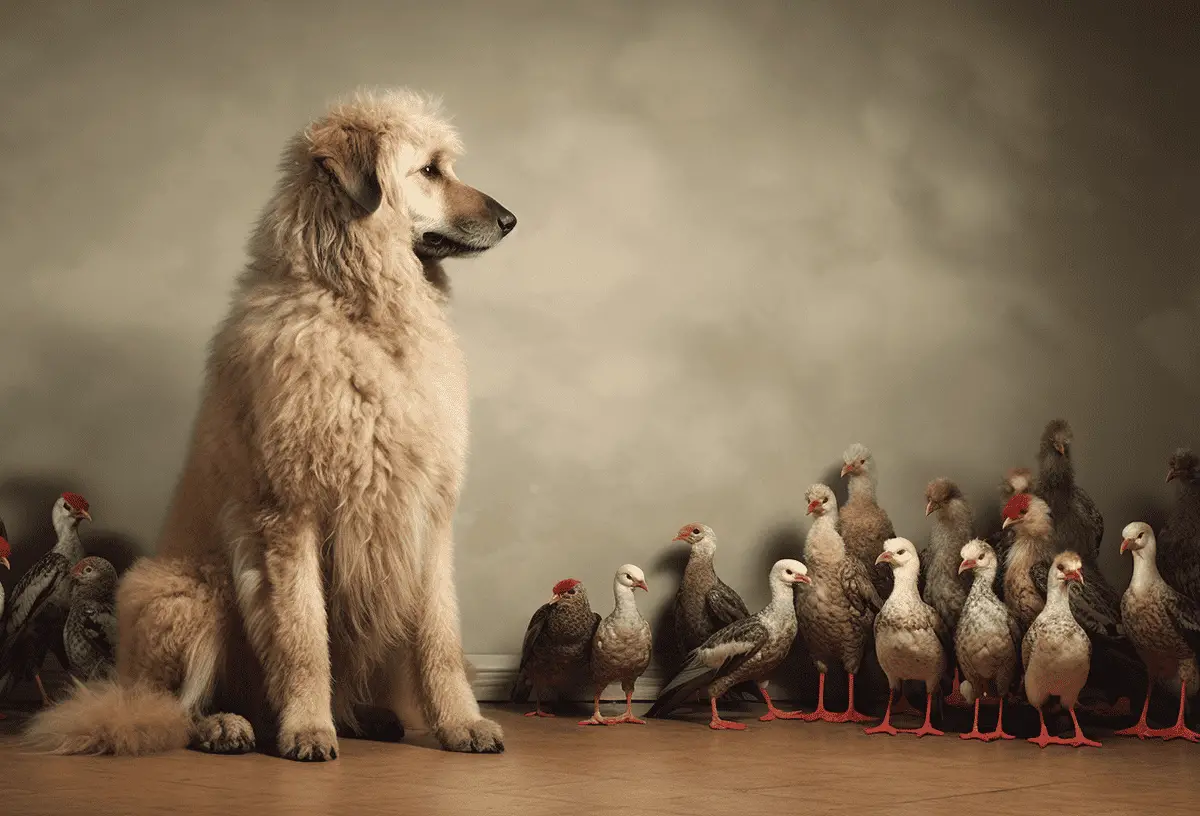Do Shepadoodles Shed? Fluff Without Flaws
What is a Shepadoodle?
What do you get when you cross a German Shepard and a Standard Poodle? A Shepadoodle! These mixed breed dogs are known for their intelligence, loyalty, and playfulness. They also possess the characteristic wavy or curly coats of the Poodle parent breeds, which can come in various colors.
But, do Shepadoodles shed? They are a low shedding breed with double coats. Read on to learn more about this lovable cross breed.
Table of Contents
Shepadoodles are highly sought after as family pets due to their friendly nature and their ability to adapt well to different environments. They require daily exercise and mental stimulation to prevent destructive behaviors. Shepadoodles are often used as service dogs, police dogs, and search and rescue dogs due to their intelligence and trainability. With proper care, training, plenty of exercise, and regular vet visits, Shepadoodles can live a healthy life with an average life expectancy of around 10 to 12 years.
Types of Shepadoodles
Shepherd doodles come in various types, each with their own unique features and characteristics. One popular type is the Mini Shepadoodle, which is a crossbreed between a Miniature Poodle and a German Shepherd.
The Mini Shepadoodle is a smaller version of the Shepadoodle, standing at around 14 to 19 inches tall and weighing between 25 to 45 pounds. Despite their petite size, Mini Shepadoodles still possess the intelligence, loyalty, and trainability of their larger counterparts. They are known for their friendly and sociable nature, making them an excellent choice for families and individuals seeking a companion.
No matter the type, Shepherd doodles all share some common characteristics. They often have a wavy or curly hair coat, which is low-shedding, making them suitable for individuals with pet allergies. Their coats can come in a variety of colors, including solid colors or a combination of shades.
Shepherd doodles are a hybrid breed known for their high energy levels and need for daily exercise. They thrive in active families or households that can provide them with plenty of activity and mental stimulation. Regular walks, playtime, and even agility training can help keep them physically and mentally healthy.
Shedding and Grooming Needs of a Shepadoodle
Shepadoodles are known for their low-shedding coat, making them an ideal choice for individuals or families with allergies. While individual Shepadoodles may have different coat types, ranging from wavy to curly, their non-shedding nature significantly reduces the amount of loose hair around the house.
However, this does not mean that Shepadoodles require no grooming. Regular brushing is essential to prevent matting and tangling of their coats, especially for those with longer or curlier hair. In addition to brushing, regular professional grooming is recommended to maintain the health and appearance of a Shepadoodle’s coat. This includes regular hair trims, nail clipping, and ear cleaning to ensure their overall hygiene. By staying on top of their grooming needs, Shepadoodles can continue to delight their owners with their beautiful and low-shedding coats.
How Much Do Shepadoodles Shed?
Shepadoodles are an intelligent breed that combines the intelligence of German Shepherds with the curly coats of Poodles. When it comes to shedding, Shepadoodles are known for their low-shedding tendencies, making them a great choice for individuals with pet allergies or those who prefer a clean home.
The shedding levels of Shepadoodles can vary depending on the generation. F1 Shepadoodles, which are the first generation crossbreeds, typically shed very little hair due to their wavy and curly coats. On the other hand, F2 Shepadoodles, which are second-generation crossbreeds, shed almost no hair at all. This means that Shepadoodle owners can rest assured that their furry friends won’t leave a trail of hair behind them.
Regular grooming is important for Shepadoodles to prevent hair build-up and potential discomfort. Grooming includes brushing their thick and curly coats regularly to remove any loose or dead hair. This can also help to prevent matting and keeps their skin healthy. Additionally, regular grooming sessions provide an opportunity to bond with your Shepadoodle.
In conclusion, Shepadoodles shed very little hair thanks to their thick and curly coats. The shedding levels can vary depending on the generation, with F1 Shepadoodles shedding a little and F2 Shepadoodles shedding almost none. Regular grooming is essential to prevent hair build-up and keep your Shepadoodle comfortable and healthy. With their low-shedding coat, Shepadoodles are a great choice for individuals or families looking for a low-maintenance companion.
Coats and Coat Colors
Shepadoodles come in a variety of beautiful coat types and colors. One of the most common coat types is curly, which is known to shed the least. These curly coats are typically low-shedding and require regular grooming to prevent matting. This type of coat is perfect for individuals with pet allergies, as it minimizes the amount of dander in the air.
Another coat type seen in Shepadoodles is wavy. These coats have a slight wave to them and are also considered low-shedding. While they may not require as much grooming as curly coats, regular brushing is still recommended to maintain their beautiful appearance.
For those who prefer a more simplistic look, Shepadoodles may also have straight coats. Straight coats shed more than curly or wavy coats but less than breeds such as Old English Sheepdogs. While they may require slightly less maintenance, regular brushing is still important to keep their coat healthy and prevent excessive shedding.
In terms of color, Shepadoodles come in a variety of options. Common colors include black, black with white markings, red with white markings, and chocolate. These colors can vary in shade and intensity, creating unique and stunning appearances. It’s worth noting that rare coat colors may be more expensive due to their rarity.
Whether you prefer a curly, wavy, or straight coat, Shepadoodles offer a variety of options to suit your preference. With their stunning coat colors and low-shedding nature, Shepadoodles are a wonderful choice for those looking for a beautiful and low-maintenance companion.
Brushing and Combing Your Shepadoodle’s Coat
Proper grooming is essential to keep your Shepadoodle’s coat healthy and looking its best. Regular brushing and combing will not only prevent excess shedding but also help to prevent mats from forming. Here are the steps to follow for brushing and combing your Shepadoodle’s coat:
First, gather the necessary tools. For their curly and fast-growing coats, a slicker brush and a wide-toothed comb are recommended. These tools will help to remove tangles and mats gently.
Start by brushing your Shepadoodle’s coat with a slicker brush. Begin at the base of the fur and work your way up to the tips. This will loosen any tangles or matted hair.
Next, use a wide-toothed comb to comb through their coat. Be gentle and patient, especially when dealing with tangles. Start at the roots and work your way down to the tips, using short strokes.
It’s important to brush and comb your Shepadoodle’s coat two to three times a week. This will help to prevent excess shedding and keep their coat looking neat and tidy.
In addition to brushing, it’s essential to check and clean your Shepadoodle’s ears regularly to prevent infections. Trim their nails regularly to maintain their paw health.
By following these steps and using the right tools, you can keep your Shepadoodle’s coat in top condition and minimize shedding and matting. Remember, regular grooming not only keeps them looking great but also contributes to their overall health and well-being.



